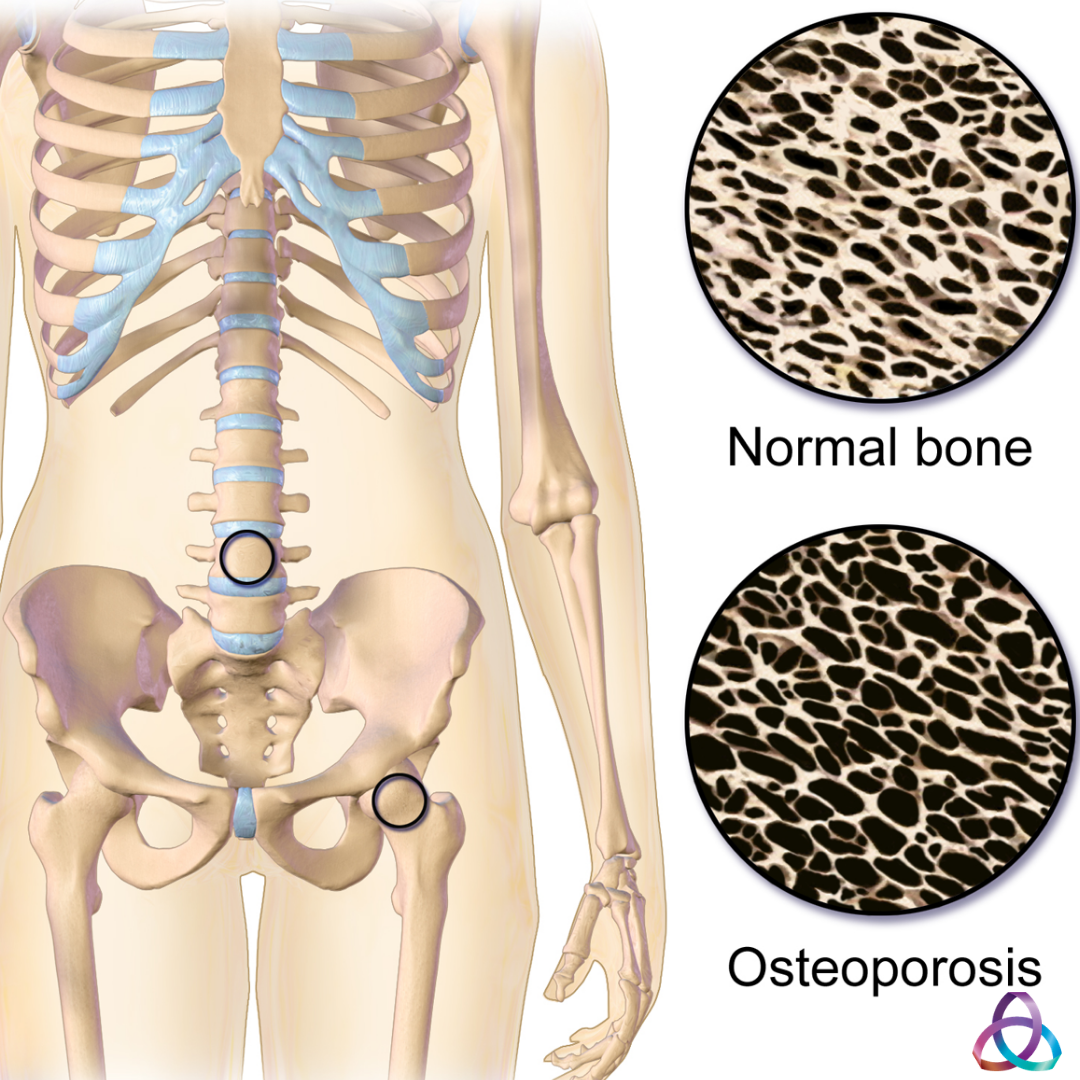WORLD Osteoporosis Day fell on Saturday 20 October and this article is aimed at improving the awareness around the condition, which is essentially a “silent disease”. Sometimes there can be no sign or symptom of osteoporosis prior to a person breaking a bone.
However, due to the consequences of a fracture secondary to osteoporosis, it is important to be proactive if you have any of the risk factors and get tested.
WHAT IS OSTEOPOROSIS?
Osteoporosis means porous bones. Bone is a living tissue that is constantly being replaced. As we get older, more bone is naturally lost than replaced, but people with osteoporosis lose more. This causes the bones to become fragile and more prone to break easily. To maintain healthy bones we need calcium, vitamin D, adequate calorie intake, proteins, sex hormones and weight-bearing/ strengthening exercise to keep them healthy.
WHAT’S THE DIFFERENCE BETWEEN OSTEOPOROSIS AND OSTEOPENIA?
Osteopenia is the early stage of osteoporosis with the same risk factors. A diagnosis of osteopenia puts a person at a higher risk of developing osteoporosis. A diagnosis of osteopenia is essentially a warning sign that you must start to put some preventative measures in place and start looking after your bones.
WHO IS AFFECTED?
In Ireland, 25% of men and one-in-two women over 50 will fracture a bone as a consequence of osteoporosis. It is estimated that 300,000 people in Ireland have osteoporosis.
SIGNS AND SYMPTOMS OF OSTEOPOROSIS
Þ Loss of height (2-16cm), especially if a person has back pain and their posture has changed
Þ Sudden severe episodes of upper, middle or lower back pain
Þ A hump developing in the upper back region
Þ Unexplained broken bones
Þ Anyone who breaks a bone from a trip or fall who has any risk factors
HOW IS IT DIAGNOSED?
Osteoporosis is a preventable and treatable disease for the majority of people, but early diagnosis is essential for the best prognosis. The gold standard for diagnosis is a DXA scan of the spine and hips. It is highly recommended if you have any of the risk factors.
RISK FACTORS FOR OSTEOPOROSIS
There are more that 60 risk factors for osteoporosis. Check out the Irish Osteoporosis website for a full detailed list. The most common are menopause, genetics, steroids, past or present eating disorders, coeliac disease, low calcium and vitamin intake, smoking and excess alcohol, most cancer treatments.
TIPS FOR HEALTHY BONES
Find out if you have any of the risk factors check out the Irish Osteoporosis Society website for detail and speak with G.P. regarding testing. If you have risk factors, get tested. The DXA scan is gold standard. Early diagnosis will allow strategies to be implemented to prevent further deterioration in conjunction with your GP, chartered physiotherapist and dietician.
Ensure your diet is rich in bone healthy foods – check out the Irish Osteoporosis Society website for examples or seek advice from a dietician for advice.
Avoid negative lifestyle habits such as smoking, excessive weight or alcohol consumption. Exercise regularly, with weight-bearing, muscle-strengthening and balance-training exercises recommended as the best. However, if you have been diagnosed with either osteopenia or osteoporosis, first speak with your GP regarding your exercise routine or taking up a new exercise routine. Then make an appointment to see a physiotherapist for a specific exercise programme that is safe and appropriate for your level of fitness, age, risk of fracture, medical history and DXA scan results. There are certain exercises that need to be avoided with this diagnosis, especially those that put an excessive load on the spine.
If you have been diagnosed with osteoporosis and may be a little unsteady on your feet, there are lots of devices that can be bought from a pharmacist or occupational therapist to assist with daily living which minimise the likelihood of a fall. Examples include grab bars for steps/stairs, bath lifters, bed levers, reachers and hip protectors.
TIPS FOR EXERCISING WITH A DIAGNOSIS OF OSTEOPOROSIS OR OSTEOPENIA
Speak to your GP or a chartered physiotherapist to find out what activities are appropriate for you. Start slowly and gradually build up the amount and intensity of the exercise. Exercise should be regular to have any benefit little and often is the best strategy.
EXERCISES THAT PROMOTE GOOD POSTURE AND BALANCE ARE IDEAL
Stop your exercise programme if you experience pain and have it assessed to rule out anything serious. It is important to avoid stresses that may cause fractures, but avoiding all exercise and activities will diminish bone health.
THE FOLLOWING SHOULD BE AVOIDED
Þ Excessive forward bending of your back, for example: sit-ups or touching toes with straight legs
Þ Exercises that involve bending and twisting the spine at the same time
Þ High-impact exercises.
You can contact Nicola at Active Life Physiotherapy, Carlow Gateway Business Centre, Athy Road, Carlow,
tel: 059 9116939 or email info@activelifephysiotherapy.ie.

